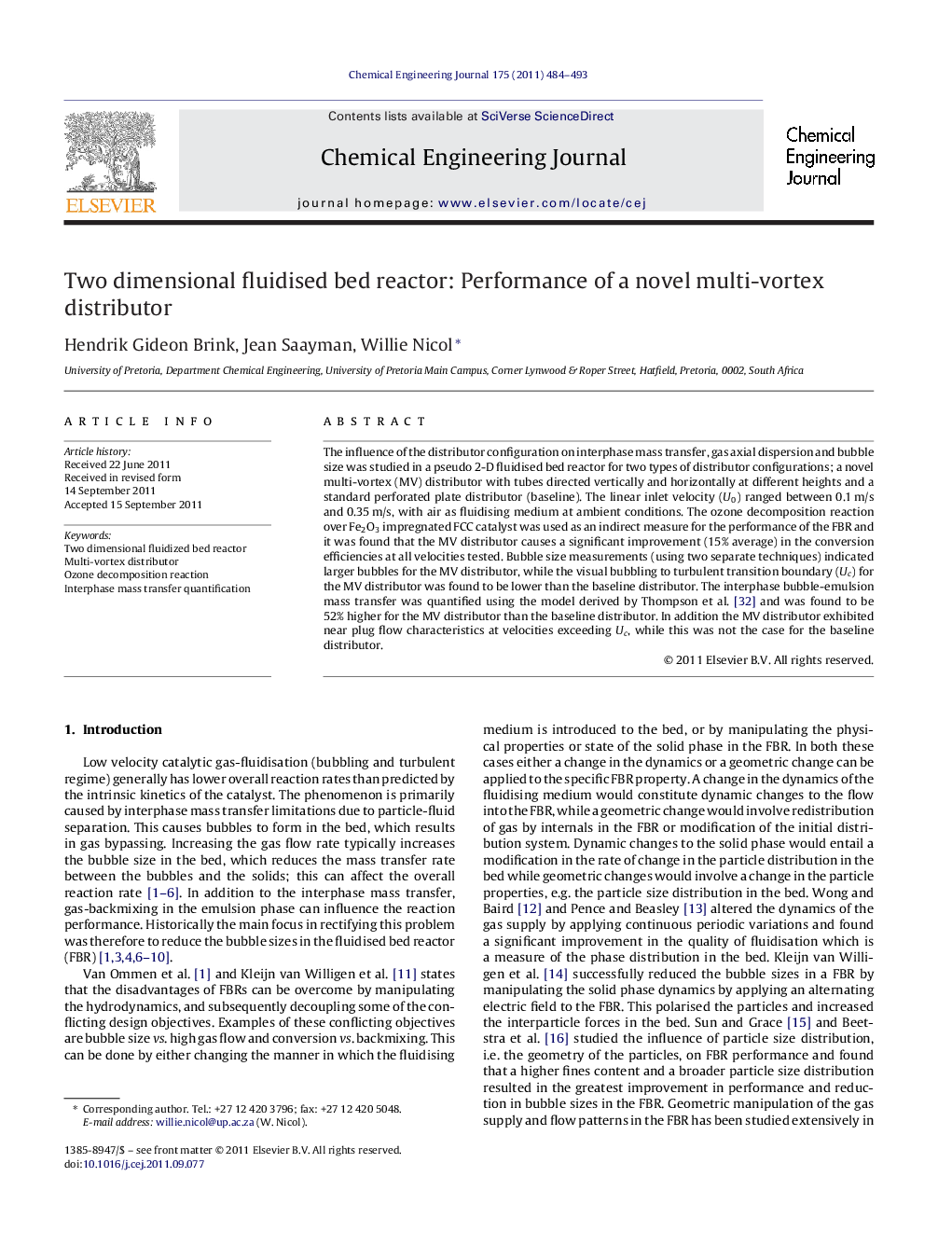| کد مقاله | کد نشریه | سال انتشار | مقاله انگلیسی | نسخه تمام متن |
|---|---|---|---|---|
| 151005 | 456460 | 2011 | 10 صفحه PDF | دانلود رایگان |

The influence of the distributor configuration on interphase mass transfer, gas axial dispersion and bubble size was studied in a pseudo 2-D fluidised bed reactor for two types of distributor configurations; a novel multi-vortex (MV) distributor with tubes directed vertically and horizontally at different heights and a standard perforated plate distributor (baseline). The linear inlet velocity (U0) ranged between 0.1 m/s and 0.35 m/s, with air as fluidising medium at ambient conditions. The ozone decomposition reaction over Fe2O3 impregnated FCC catalyst was used as an indirect measure for the performance of the FBR and it was found that the MV distributor causes a significant improvement (15% average) in the conversion efficiencies at all velocities tested. Bubble size measurements (using two separate techniques) indicated larger bubbles for the MV distributor, while the visual bubbling to turbulent transition boundary (Uc) for the MV distributor was found to be lower than the baseline distributor. The interphase bubble-emulsion mass transfer was quantified using the model derived by Thompson et al. [32] and was found to be 52% higher for the MV distributor than the baseline distributor. In addition the MV distributor exhibited near plug flow characteristics at velocities exceeding Uc, while this was not the case for the baseline distributor.
► The 2-D FBR performance with a multi-vortex (MV) distributor was compared to a perforated plate (baseline) distributor.
► The MV distributor improved the conversion efficiencies at all velocities tested with near plug flow in the turbulent regime.
► Bubble sizes for the MV distributor grew 1.4 times faster, with superficial velocity, than the baseline.
► The bubbling to turbulent transition boundary was determined to be lower for the MV distributor than the baseline.
► Fitting a transitional model the MV distributor interphase mass transfer was found to be 52% greater than the baseline.
Journal: Chemical Engineering Journal - Volume 175, 15 November 2011, Pages 484–493